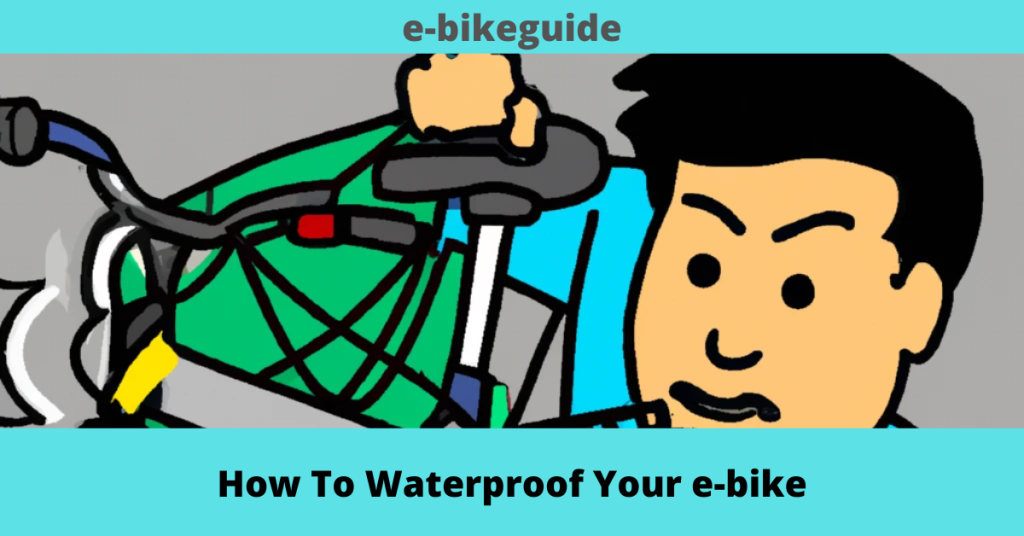Can Electric Bike be waterproofed?
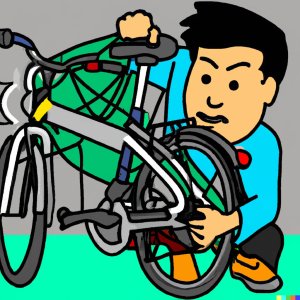
E-bikes are a great way to get around, but they can be expensive. That’s why it’s important to waterproof your e-bike to protect it from the elements. There are a few different ways to do this, but the most important thing is to make sure you do it properly so your e-bike lasts for years to come.
Below are a few steps you should consider when waterproofing your e-bike.
Cleaning
Clean the electric bike before you waterproof any component of the bike. Dirt and debris will be stuck onto your e-bike if you waterproof the bike before it is cleaned. Rinse off your e-bike with low water pressure, and then start the waterproofing. Most of the electric bike components are water-resistant, so it won’t be a problem when you are cleaning it. Wash the tires too and make sure there is nothing stuck between the frame. Use a damp cloth and soap on the e-bike parts, do this carefully and wipe it after.
Drying
After you cleaned the components you want to waterproof, make sure to dry them carefully. If you don’t dry these parts thoroughly they will lock in dirt and debris, even after the process of waterproofing. Leaving water behind can cause corrosion and rust, which affects the lifespan of the e-bike.
Sealant and cover
When choosing to waterproof your e-bike, you have two options: a cover and a sealant. A sealant is a good option for e-bike parts in wet climates. Sealants are better than covers as they are more permanent. On the other hand, sprays won’t do a good job waterproofing your e-bike components, as they wear off easily. A cover will be beneficial if you ride your e-bike in the rain. Electrical tape for example is a convenient cover for waterproofing, however, it only acts as a temporary shield between moisture and the e-bike components.
IP ratings
If you’re like most people, you’ve probably never heard of IP ratings. However, if you own an e-bike, you need to be aware of the IP classification of your bike and its components. IP is an abbreviation for “ingress protection,” and it refers to how well something is protected against water and dust. The greater the number, the greater the level of protection. The most crucial IP rating to know for e-bikes is the one for the battery. Water and dust are less likely to damage a battery with a high IP rating. The IP rating of most e-bike batteries is 54 or above. That implies they’re resistant to water and dust. However, not all e-bike parts have such high IP certifications.
For example, the motor on an e-bike usually has an IP rating of only 42. That means it’s not as well-protected against water and dust as the battery. So, when you’re shopping for an e-bike, make sure to check the IP ratings of the bike and its components. That way, you can be sure you’re getting a bike that will stand up to the elements.
The motor of an e-bike, for example, typically has an IP rating of 42. As a result, it is not as effectively secure against water and dust as the battery. When looking for an e-bike, always examine the IP ratings of the bike and its components. That way, you’ll know you’re buying a bike that can withstand the weather.
Waterproofing the battery
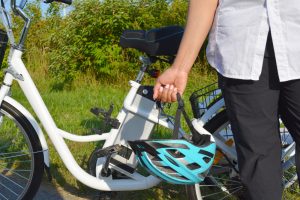
As electric bikes become more popular, it’s important to make sure that your bike’s battery is properly waterproofed. There are a few different ways to do this, and the best method will vary depending on the type of bike and battery you have. However, there are a few general tips that can help you waterproof your electric bike’s battery.
One way to waterproof your electric bike’s battery is to use a waterproof case. This will protect the battery from water damage if your bike is wet. You can also use a sealant to waterproof the battery. This will need to be reapplied periodically, but it will help keep the battery safe from water damage.
Another way to waterproof your electric bike’s battery is to use a waterproof cover. This will protect the battery from water damage if your bike gets wet. You can also use a sealant to waterproof the battery. This will need to be reapplied periodically, but it will help keep the battery safe from water damage.
You can also use a waterproof bag to protect your electric bike’s battery. This will need to be reapplied periodically, but it will help keep the battery safe from water damage. By following these tips, you can help ensure that your electric bike’s battery stays safe from water damage.
Moisture protection
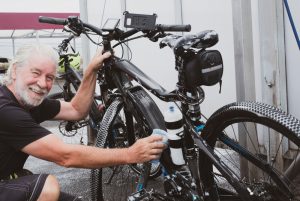
We often think of electric bikes as being impervious to weather and the elements, but that’s not always the case. Moisture can seep into the electrical components of your bike and cause damage, so it’s important to take steps to protect your bike from moisture.
One way to do this is to keep your bike’s controller dry. The controller is the brain of the electric bike, and it’s especially vulnerable to moisture damage. There are a few different ways to keep your controller dry, including using a controller cover or a waterproof bag.
Another way to protect your electric bike from moisture is to store it in a dry place. If you don’t have a garage or shed, you can cover your bike with a tarp or blanket when it’s not in use. By taking a few simple precautions, you can keep your electric bike in good condition for years to come.
Waterproofing the wires

There are a few things that you can do to waterproof the wires on your electric bike. One is to use heat shrink tubing, which is plastic tubing that shrinks when heated. This can be used to cover the wires and make them waterproof. Another option is to use silicone sealant, which is used to seal the wires and make them waterproof.
Water can easily damage the wires, and if you’re not careful, it can cause serious problems. That’s why it’s important to waterproof the body of the wires on your e-bike. You can also use a product called “Liquid Electrical Tape.” This tape is designed to protect wires from water damage, and it’s very easy to apply. Simply wrap the tape around the body of the wires, and you’re done. Liquid Electrical Tape is available at most hardware stores, and it’s relatively inexpensive. It’s definitely worth the investment, as it will protect your e-bike’s wires from water damage.
How do you waterproof an e-bike?

If you want to keep your e-bike in good condition for as long as possible, it’s important to waterproof it regularly. This means keeping it clean and free of any water or moisture that could cause rust or other damage. There are a few different ways to do this, and the best method may vary depending on the climate and conditions where you live. In general, however, you’ll want to start by washing your e-bike down with a hose and soap, then drying it thoroughly. Once it’s dry, you can apply a waterproofing spray or sealant to any exposed metal parts. For added protection, you can also cover your e-bike with a tarp or other waterproof cover when it’s not in use.
There are many ways to waterproof your e-bike’s components, but using a spray is one of the most effective methods. When applied properly, a spray will create a barrier between your components and the water, keeping them dry and safe from corrosion. Before you begin, be sure to clean your components with a degreaser and allow them to dry completely. Once they’re clean, simply spray them with the waterproofing spray of your choice and let them dry. This process will protect your components from water damage and keep them working like new ones for years to come.
The most vulnerable parts of an e-bike are the battery and the motor. Both of these components are susceptible to water damage, so it’s important to keep them well-protected. You can use tape to waterproof these parts by wrapping them in a layer of tape. This will create a barrier between the water and the components, protecting them from damage.
In addition to the battery and motor, other vulnerable parts of an e-bike include the control panel and the wires. These parts are also susceptible to water damage, so it’s important to protect them as well. You can use tape to waterproof these parts by wrapping them in a layer of tape. This will create a barrier between the water and the components, protecting them from damage. When it comes to waterproofing your e-bike, the tape is an effective and easy-to-use solution. By wrapping the vulnerable parts of your e-bike in a layer of tape, you can create a barrier between the water and the components, protecting them from damage.
Dielectric grease is also an ideal way to waterproof your e-bike’s components. By applying a thin layer of grease to exposed metal surfaces, you can create a barrier that will keep water out and prevent corrosion. This is especially important for electrical connections, which can be damaged by moisture. Dielectric grease is easy to apply and relatively inexpensive, making it a great way to protect your investment in your e-bike.
E-bike motors
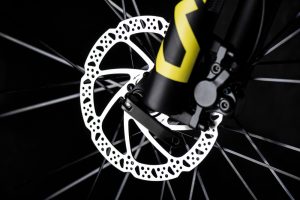
E-bikes are a great way to get around, but are they waterproof? In this article, we’ll take a look at whether or not e-bike motors are waterproof and what you can do to protect your investment. E-bike motors are not waterproof, but they are water-resistant. This means that they can withstand some exposure to water, but you should take care to keep them dry.
There are a few things you can do to protect your e-bike motor from water damage. First, you can buy a water-resistant cover for your motor. Second, you can make sure that your bike is stored in a dry place. Finally, you can regularly inspect your motor for signs of water damage. If you take these steps, you can rest assured that your e-bike motor will be protected from the elements.
Cycling in the rain

With the increasing popularity of e-bikes, more and more people are wondering if they are safe to ride in the rain. Here are a few things to keep in mind if you’re planning on riding your e-bike in the rain:
Riding in the rain can decrease your visibility, so it’s important to have lights that will help you see and be seen. Second, be aware of wet conditions and take extra care when braking. Wet brakes can take longer to stop your e-bike, so give yourself plenty of space to brake. Finally, consider investing in some rain gear to keep yourself dry and comfortable while riding. With a little preparation, riding your e-bike in the rain can be safe and enjoyable. Just be sure to take extra precautions and be aware of the potential risks.
Are you able to cycle in the rain?
E-bikes are a great way to get around, but can they go in the water? It turns out that they can, but there are a few things to keep in mind. First, make sure that the battery is completely sealed and waterproof. Second, avoid using the bike in salt water, as this can damage the electronics. Finally, if you do get the bike wet, make sure to dry it off as soon as possible to avoid rust and corrosion.
Waterproofing your e-bike: conclusion and summary

If you have an e-bike, it is important to consult the manufacturer’s website for any additional steps that need to be taken to keep your bike in good working condition. Many manufacturers will have specific instructions on how to clean and maintain your e-bike, as well as troubleshooting tips in case something goes wrong. By taking the time to consult your e-bike’s manufacturer’s website, you can be sure that you are doing everything you can to keep your bike running smoothly.
The popularity of e-bikes is on the rise, as more and more people are looking for alternatives to traditional bicycles. E-bikes offer several advantages over traditional bikes, including being easier to ride up hills and over long distances. Additionally, e-bikes are environmentally friendly, as they do not produce emissions. With the increase in popularity, there are now several different types and models of e-bikes available on the market, to suit a variety of needs and budgets.
An e-bike battery is a battery that is specifically designed for use with electric bicycles. E-bike batteries are typically lithium-ion batteries, which offer a high energy density and are relatively lightweight. There are a few things to consider when choosing an e-bike battery, such as the type of battery, the capacity, and the voltage.
E-bike batteries are available in a variety of voltages and capacities, and the best battery for a particular electric bicycle will depend on the bike’s design and intended use. Waterproofing your bike battery can help to protect it from the elements and prolong its life. There are a few different ways to waterproof your bike battery as mentioned earlier in the article, including using a clear sealant or wrap, or using a waterproof case.
